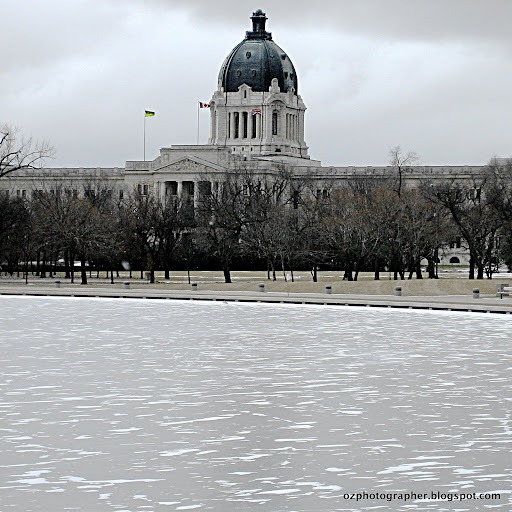Digital Zoom (DZ) is a bonus feature available on most consumer digital cameras. Some low-end digital cameras
"rely entirely on digital zoom, lacking a real zoom lens, as on most camera phones."Personally, I never ever preferred using digital zoom because of poor zooming quality with additional noise. As a result, I always turned it off on my cameras if the functionality was enabled by default.
Leica D-LUX 4, as a top-end consumer level compact camera, also supports digital zoom up to 10x based on its 2.5x optical zoom. Probably because Leica defined D-LUX4 a semi-professional camera, as the
Son of M8, digital zoom is disabled by default in this camera.
However, for having a better understanding on my Leica D-LUX 4, I was still curious about its ability of digital zoom. Therefore, several test shots was taken in different occasions, as shown below. Just click to download the original JPEG images with no any processing applied.
At first, three shots taken from the same standing place, and from the optical wide-angle end to the digital telephoto end.

L1040327.JPG
Buildings at the south of Pyrmont Point Park, Pirrama Road, Pyrmont, NSW 2009
Leica D-LUX4, F/5.0, 1/500 sec, 5.1 mm (no zoom at the wide angle end)
ISO 80, Pattern Mode, 3:2, 15:00 19 July 2009

L1040328.JPG
An apartment close to Pyrmont Point Park, Harris Street, Pyrmont, NSW 2009
Leica D-LUX4, F/5.0, 1/400 sec, 12.8 mm (10x digital zoom)
ISO 80, Pattern Mode, 3:2, 15:00 19 July 2009

L1040329.JPG
The Nokia building close to Pyrmont Point Park, Harris Street, Pyrmont, NSW 2009
Leica D-LUX4, F/5.0, 1/400 sec, 12.8 mm (10x digital zoom)
ISO 80, Pattern Mode, 3:2, 15:05 19 July 2009Not bad? See below for the corresponding cropped images in 100% pixel with no processing applied. The two scenes in 300×450 pixels (at left) have been digitally zoomed into 2520×3776 pixels (at right) with more visible details.


L1040327.JPG (Left) v.s. L1040328.JPG (Right)


L1040327.JPG (Left) v.s. L1040329.JPG (Right)Secondly, two test shots of the top of
Sydney Tower taken from the same standing point in different zoom ratios.

The Top of Sydney Tower - View within Hyde Park
Leica D-LUX4, F/4.5, 1/1000sec, 12.8 mm (8x digital zoom)
ISO 80, Pattern Mode, -1 step, 3:2, 08:30 18 July 2009

The Top of Sydney Tower - View within Hyde Park
Leica D-LUX4, F/4.5, 1/640sec, 12.8 mm (4x digital zoom)
ISO 80, Pattern Mode, -1 step, 3:2, 08:32 18 July 2009All above shots were taken under bright daylight. How about indoor under varied lights? See the following test shots taken at a
QVB cafe.

Jewels in the window of a jewelry shop at QVB
Leica D-LUX4, F/2.8, 1/125 sec, 12.8 mm (10x digital zoom)
ISO 100, Pattern Mode, 3:2, 08:50 18 July 2009

A girl working at the window of a jewelry shop at QVB
Leica D-LUX4, F/2.8, 1/125 sec, 12.8 mm (10x digital zoom)
ISO 200, Pattern Mode, 3:2, 08:50 18 July 2009

Two men chatting at a cafe in QVB
Leica D-LUX4, F/2.8, 1/60 sec, 12.8 mm (10x digital zoom)
ISO 400, Pattern Mode, 3:2, 08:51 18 July 2009You can see the zooming quality and image noise goes bad, significantly, when the lighting condition becomes worse. Nevertheless, the camera's digital zoom works very well in certain lighting conditions, at least much more better than my expectation compared with other digital cameras I ever used.
As a result, for me, I have enabled Digital Zoom on my Leica D-LUX 4 in P/A/S/M modes. However, C1 and C2 modes still keep using optical zoom, ISO 80 and RAW as they are for serious photography.














